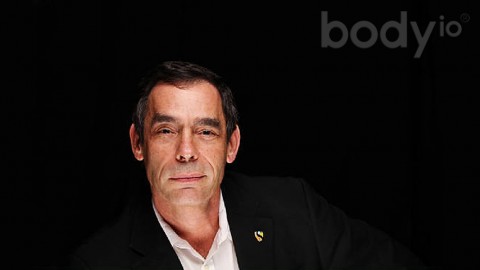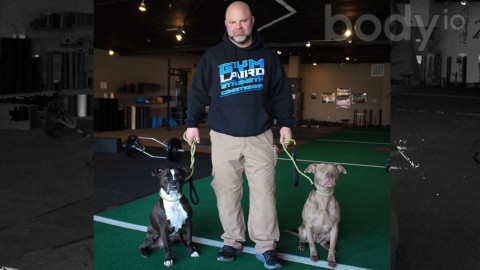’ve had the opportunity to review hundreds of client assessments over the years. This process has given me great insight into how people perceive themselves, establish their goals and attempt to achieve them. What I find most interesting are the common reoccurring patterns, which paint a very clear picture of what certain groups of people struggle with and highlight the most common mistakes they make. These are the mistakes that I want to help you avoid.
When I say mistakes, I’m not referring to the finicky diet details that Internet gurus like to argue about on Facebook, such as meal timing, supplements or fasted vs. fed cardio. I consider those things to be minutiae and somewhat irrelevant if someone has already made a mistake in assessing the bigger picture, such as choosing an inappropriate goal to begin with.
This is the scenario I want to discuss in this article, as it seems to be quite common among men and women who are already on the leaner side of the spectrum. They are typically intermediate trainees and have been experimenting with a variety of diets for several years. Perhaps you know someone like this; they have been dieting and training hard for as long as you can remember, but their body hasn’t changed for the better.
Some of you might be asking– how can your goal be inappropriate? The best way to help you understand this concept is to break it down step-by-step, much like how I analyze a client’s assessment.
Please keep in mind that this example is based on aesthetics, to keep it simple. Overall health should always be a top priority.
Step 1 – The Client’s Goals
When I ask a client to list their top 3 goals many of them answer with something like this:
1. I need to lose XX pounds
2. I want to see my abs or at least tighten up my midsection.
3. I want to have firm, defined muscles. Most men describe a chiseled upper body and women typically desire curvy glutes, defined arms and shoulders. In their own way, everyone wants to be “jacked”, for lack of a better term.
These goals seem totally reasonable. After all, who doesn’t want these things? If I didn’t know anything else about this client and only considered their goals, I might take their word for it and agree that a fat loss diet was appropriate. However, that would be irresponsible. Accurately assessing a client’s needs requires further investigation.
Step 2 – Current Progress Pictures
It is mandatory that clients provide current progress photos. I have learned that how a client perceives and describes their current physique is not always accurate. We all suffer from some degree of body dysmorphia and the impartial opinion of a coach is invaluable.
Time and time again, when a client tells me that they need to lose XX pounds, I look at their current progress picture and completely disagree. In many cases, they actually need to gain muscle mass if they ever want to achieve the shape and look they desire. In fact, losing XX pounds would be detrimental, likely resulting in losing even more of what little muscle mass they have, which they will need if they want to achieve Goals 2 & 3. Now you can see how their first goal might be completely inappropriate, given that chasing it will leave them looking like a smaller, softer, deflated version of their current self, and they’ll be disappointed all over again.
Step 3 – Food Log Analysis & Diet History
The next step is to review the client’s food logs. More often than not, the first obvious thing is caloric restriction, sometimes even to a severe degree. They may indulge from time to time on Carb Nite® or when Carb Backloading™, but most days are generally very low in calories, even on training days. Their schedule will also typically include fasting for extended periods of time. This comes as no surprise, as the client genuinely believes they need to lose XX pounds, so they are only doing what they think is right.
Diet history is another compounding factor for these clients. How long have they been restricting calories? Exercise type and frequency must also be considered. In most cases, you will notice discordance; a very low caloric intake, and regular intense exercise, yet no change in body composition. This is a good indicator that the client’s past/current diet strategy has resulted in a suppressed metabolism. These metabolic adaptations are much more common than you think.
The good news is –that with the right plan, you can get your healthy metabolism back!
The Plan
The first thing the client must do is accept their current situation and NOT beat themself up over it. You’re not alone. I assure you, this scenario is very common. I’ll be the first to admit that I’ve made these mistakes myself in the past.
Eventually, they will accept the fact that they need to shift their mindset and reassess their goals. This can be an emotionally challenging process for some people, and requires patience and compassion.
Choosing the best way to tackle diet and exercise moving forward depends on the client’s diet history and current exercise program. Some people are able to increase caloric intake quite quickly without any fat gain. Others, typically those who have been restricting calories for long periods of time, require a more gradual strategic plan. This is commonly referred to as a reverse diet. Either way, the goal is to increase your caloric intake into a healthy maintenance range, with minimal to no fat gain. At that point, many people actually start to build muscle mass without a significant caloric surplus, while others will have to continue increasing their caloric intake. At the end of the day, a good gradual plan will get your metabolism fired up again, giving you lots of flexibility for calorie manipulation in the future. In my experience, clients who don’t have a suppressed metabolism are more likely to reap the full benefits of Carb Backloading, which helps to build lean muscle while simultaneously losing body fat.
I hope this article has shed some light on one of the most common mistakes people make when self-assessing their needs. Reaching a solution may be easy; you may have simply been chasing inappropriate goals. Obtaining feedback from a professional coach is something I highly recommend. If you’d like to find out more about personalized Carb Nite® and Carb Backloading™ Coaching, you can contact me personally at coaching@body.io.












